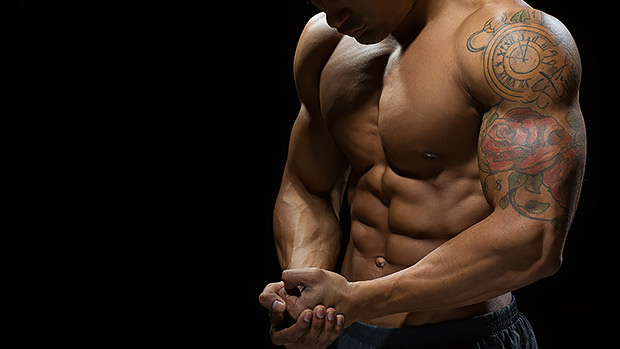If you want to be fast, strong, and powerful, then serious core training needs to be a staple of your program.
A strong core creates the whole-body stiffness necessary to run, jump, throw, kick, and lift weights at high levels. If you can stiffen your core, you'll have a more efficient transfer of kinetic energy throughout the body during any task. If your core buckles during any athletic movement, you have an energy leak. That means your movements will be less efficient and powerful.
Movements like squats, deadlifts, presses, and pulls all work the core significantly, but some extra core work should be added to make these staple lifts even stronger. If you can keep your core stiff while moving a heavy weight, you'll become significantly stronger when doing any compound lift, and less prone to injury.
Your core is responsible for spinal flexion, extension, lateral flexion, and rotation. Even more important though is the ability to resist movement. Anti-flexion, anti-extension, and anti-lateral flexion exercises are all necessary to increase your core strength so you can keep your spine in a safe neutral position during the big lifts.
Generally speaking, generating powerful movement from the spine is a bad idea. Having a tight and braced core allows the ball and socket joints of the hips and shoulders (depending on the lift) to create the forceful movement necessary for a safe, successful lift.
Here are the go-to "anti" exercises for flexion, extension, and lateral flexion:
Double Kettlebell Front Rack Carry
Stir The Pot
Suitcase Carry
You should be able to create powerful core rotation, as well as resist rotation. Think of a golf swing. When executing the drive, power is generated from the hips but transfers through the torso. You need that strong rotational movement to drive the ball far. The anti-rotation component of the golf swing is when you need to slow your club down.
Here are three great exercises to build rotational core strength, plus an anti-rotational exercise:
Cable Chop Low to High
Cable Chop
Cable Chop High to Low
All three of these will target your obliques from various angles. But remember, don't over-rotate your torso or hips. You'll be able to place significantly more tension on your obliques by keeping your hips squared during the set.
Landmine "Stop" Twist
Focus on keeping your hips square and stop your rotation about halfway from your shoulder to your hip. Try to hold the pause for 1-3 seconds at a dead stop before bringing the barbell back to the start.
Adding core work can be tricky, especially if your current program is already full and you're crunched for time.
Try doing an "anti" movement between sets of your big compound lower-body lifts. Making sure your core is fired up and ready to brace will set you up for success on each set.
That said, a little core stimulation with the "anti" exercises goes a long way between sets. You want to get your core fired up to brace well, but you don't want to exhaust your core between sets.
For rotational exercises, add these between your assistance exercises or at the end of your workouts for some targeted oblique work.





